Recent Articles
Popular Makes
Body Types
2020 Nissan 370Z Road Test and Review
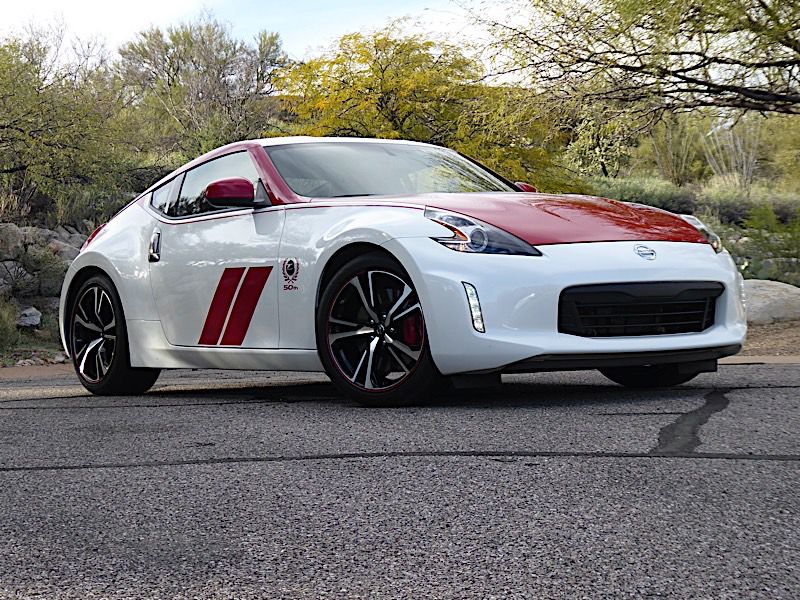
20nissan370zfrontbeauty1sessions ・ Photo by Ron Sessions
Along with the semi-exotic Nissan GT-R high-performance four-seat coupe, the 2020 Nissan 370Z adds sportiness to the entire Nissan car lineup. Based on the same FM rear-wheel-drive platform as the Infiniti Q50 and Q60 cars from Nissan's luxury division, the 370Z features lightweight body construction with aluminum doors, hood and liftgate, a carbon-fiber driveshaft, and aluminum-intensive suspension.
Every 2020 370Z is a two-seat coupe, following the discontinuation of last year's convertible model. Including the $895 destination charge, the 2020 370Z lineup includes the $30,985 base 370Z, $34,715 370Z Sport, $40,385 370Z Sport Touring, and $46,685 370Z NISMO. This being 50 years after the first the "Z-Car" — the 1970 Datsun 240Z — a 50th Anniversary edition is available for a $2,600 upcharge on the 370Z Sport. Our 50th Anniversary test vehicle features BRE Racing diagonal hashtags emblazoned across the doors, a dramatic two-tone paint scheme, and red-striped 19-inch alloy wheels. The NISMO gets its own special two-tone paint plus GT-R-like aerodynamic pieces. Competitors include Toyota Supra, Chevrolet Camaro, and Ford Mustang.
Ample V6 Power
The heart and soul of the 370Z is its highly evolved VQ V6 engine. Even though the car hasn't seen a major redesign since way back in 2009, this engine still has velvety torque down low and can rev to a lofty 7,500 rpm when summoned. Power distribution is pretty even and throttle response rewarding all over the engine speed range, thanks to variable valve timing and lift on the intake side as well as twin intake plenums. The base engine is rated at 332 horsepower and 270 lb-ft of torque, with the NISMO variant tuned to 350 hp and 276 lb-ft. That’s more than enough to make the 3,400-pound coupe entertaining to drive day in and day out.
Active noise cancellation, standard in all but the base 370Z, works through the Z’s speakers to quell unpleasant low-frequency rumbles when cruising at highway speeds. Meanwhile, active sound enhancement bolsters the engine’s natural intake sound when you're accelerating at wider throttle openings.
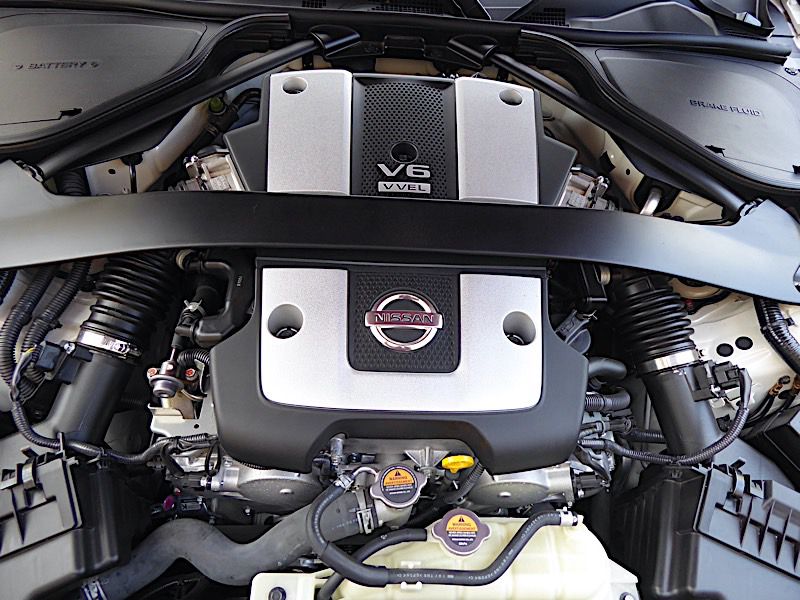
Photo by Ron Sessions
Shifting Prefences
The 2020 370Z is available with either a six-speed manual transmission or a seven-speed automatic. You can choose either transmission on all but the automatic-only Sport Touring model. Magnesium steering-wheel paddle shifters that give the driver manual shift control are included with all automatic 370Zs but the base model.
Both shifters are tight and right for the job. The leather-wrapped automatic one shown here falls neatly into hand and has a manual gate for spirited driving. Ditto for the manual stir stick, which facilitates cog selection with robust action and short, well-defined throws. Considering that the 370Z remains such an analog, driver-involving machine in this age of automatic-everything, semi-autonomous motoring, the close-ratio six-speed manual is really worth trying out before you choose a gearbox. It’s a rapidly disappearing powertrain choice that was installed in fewer than 2 percent of all new vehicles sold in 2019. You can’t go wrong with either gearbox, but the six-speed manual has a few tricks, including an EXEDY high-performance clutch for quick shifts and a rev-matching downshifting feature that simulates heel-toe-like action for sporty driving fun.
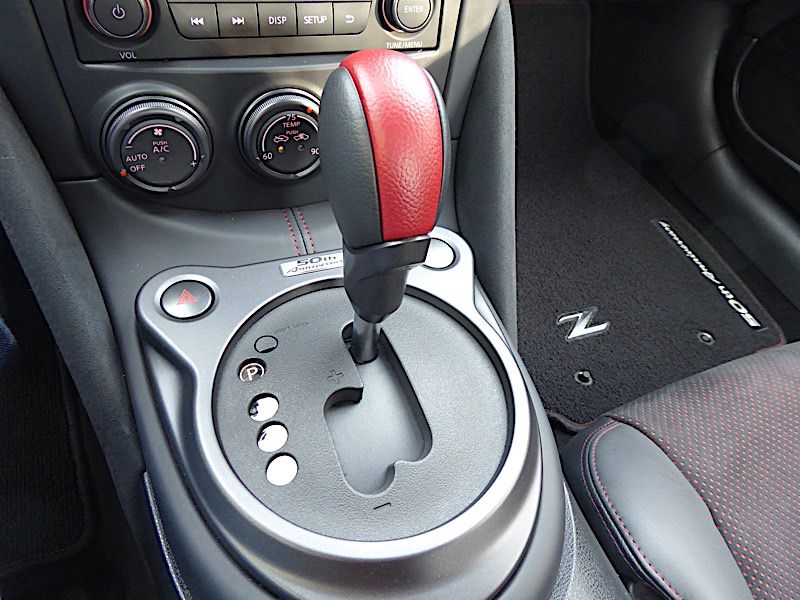
Photo by Ron Sessions
Command and Control
With a design more than 10 years old, the 370Z’s vintage sports and grand touring layout doesn’t have all the latest infotainment and tech systems. The classic three-pod analog instrumentation features orange type and moves up and down with the tilt (but not telescopic) steering column, so the standard leather-wrapped steering wheel never obscures the instruments. The 50th Anniversary model features a suede-wrapped steering wheel with a red center mark.
Automatic climate control, push-button start, cruise control (but not adaptive cruise control), and Bluetooth hands-free phone pairing are standard. Sport and higher trims get a six-speaker AM/FM/CD Bose system with subwoofers and MP3 capability. The Sport Touring and NISMO add navigation with a 7-inch display and old-school hard buttons, USB audio streaming, DVD video playback, and SiriusXM with traffic and weather. There is no in-car Wi-Fi or Apple CarPlay and Android Auto connectivity, however. There’s just one cupholder in front with two more and an extra glovebox behind the seats. Stash space atop the console for electronica, trip snacks, and such is sparse, but lower trims without the 7-inch navigation screen have a neat sandwich-sized concealed compartment in its place.
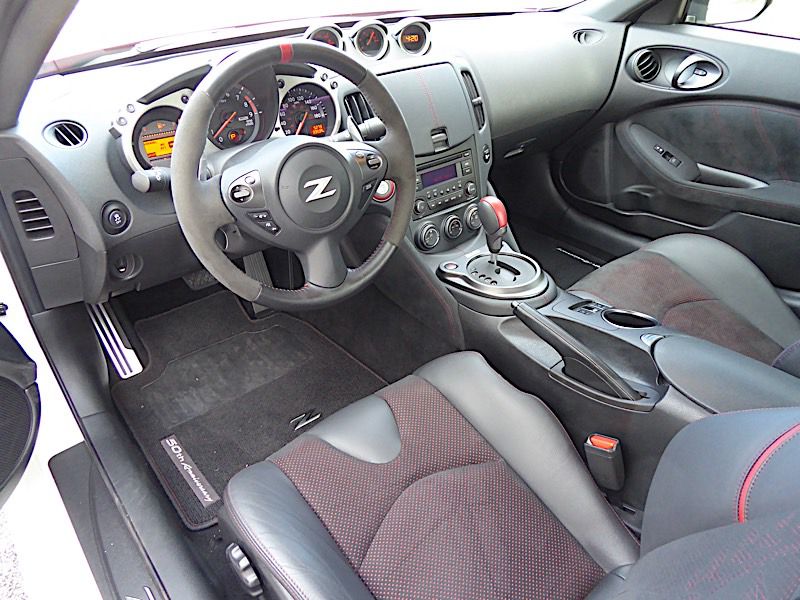
Photo by Ron Sessions
Butts in Seats
Well-contoured, supportive, and firm yet comfortable sport bucket seats are standard, and there's plenty of legroom and headroom. The driver’s seat has inner-thigh support as well. Cloth upholstery is standard in the base and Sport trims, with leather and faux suede available in Sport and standard in Sport Touring models. In Sport and Sport Touring models with power-adjustable seats, the seats are heated and the controls are on the inboard side of the seats adjacent to the console.
The 50th Anniversary model we tested features leather- and faux-suede trimmed seats with driver-adjustable lumbar, contrasting stitching, and a large 50th Anniversary graphic. Meanwhile, the NISMO sets itself apart from other 370Z models with standard Recaro seats. The more aggressively bolstered Recaros are trimmed in leather and faux suede and are manually adjustable only.
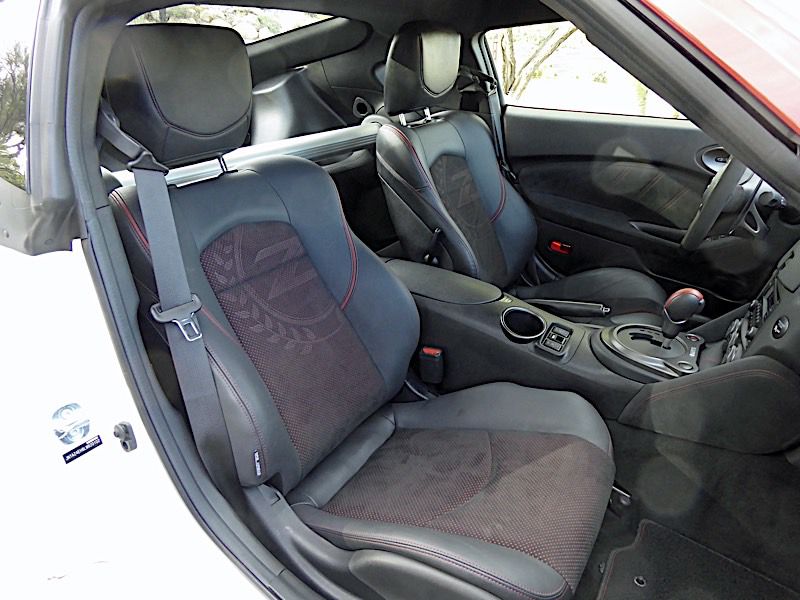
Photo by Ron Sessions
Stashability
You might want to take the SUV instead for bigger Costco runs, but at least the 370Z rear cargo bay has more space than the Mazda MX-5 Miata and about the same cargo room as the all-new 2020 Chevrolet Corvette Stingray. The space is wide but relatively shallow, measuring 6.9 cubic feet in total, though it’s easy to access via the large rear hatch opening.
The cargo area will accommodate a pair of airline roller bags, plus some other smaller items fitted around the large rear shock towers and the aluminum-trimmed rear body cross brace. The rear hatch has an electric lock, operated either by a console switch or one just above the license plate opening. Sport Touring models feature a window shade-type cargo cover to hide valuables.
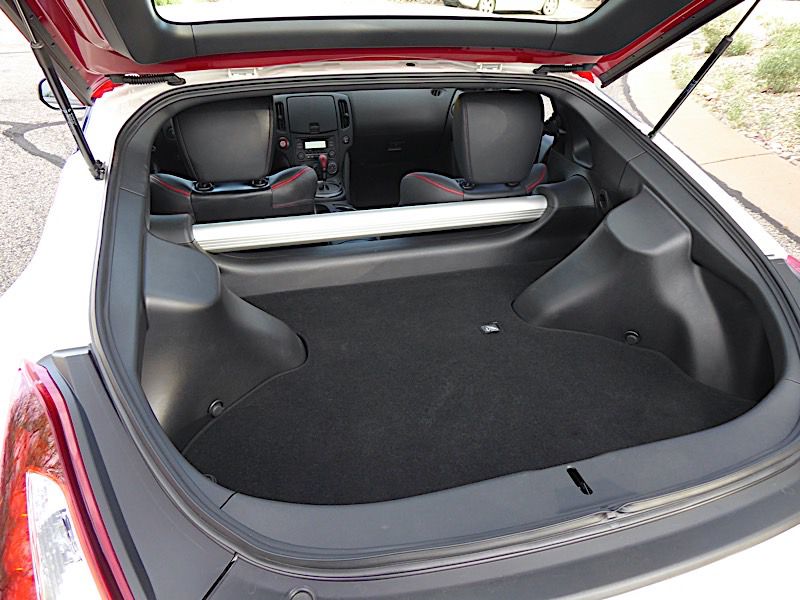
Photo by Ron Sessions
Z Safety
Unlike many other cars that have a backup camera image in the center infotainment screen, the 370Z’s federally required backup camera display is integrated with the auto-dimming rearview mirror. While the camera image is smaller there, its close proximity to the driver and the driver’s line of sight makes it easy to use. With the fast-sloping rear window and thick rear roof pillars, vision out the back and to the three-quarter rear is not great. Unfortunately, this is a car without blind-spot or rear-traffic monitoring.
Otherwise, the 350Z relies on old-school safety features, including six airbags, active head restraints, pre-tensioning seatbelts, stability and traction control, and a tire pressure monitoring system. Structural enhancements include aluminum side-door beams, an energy-absorbing steering column, a breakaway rear engine mount and brake pedal, and front and rear crumple zones. There are also top tethers for a child safety seat mounted on the passenger seat. Neither the National Highway Traffic Safety Administration nor the Insurance Institute for Highway Safety publishes crash-test ratings on the 370Z.
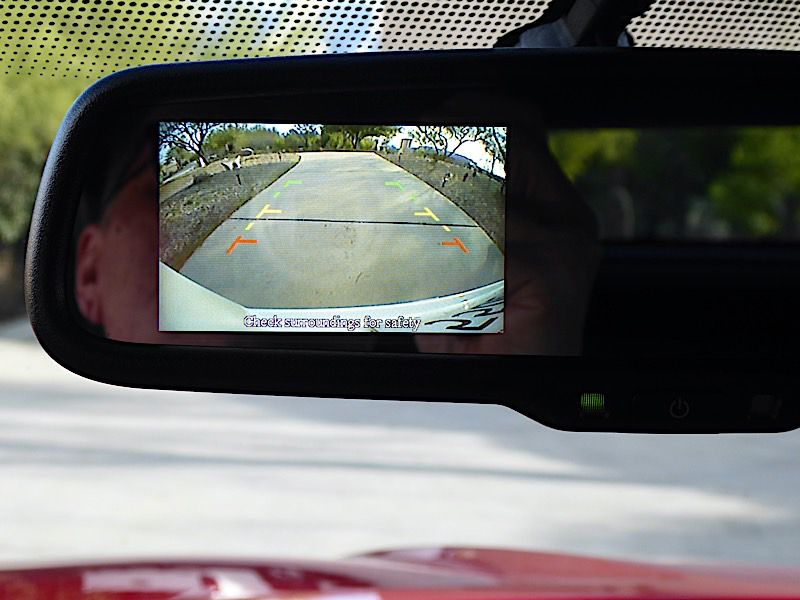
Photo by Ron Sessions
Getting a Grip
The 370Z features 18-inch alloy wheels on the base coupe and extra-light forged-aluminum RAYS 19-inchers on the rest of the lineup. Regardless of the model, the rear tires are wider than the fronts, with 225/50R18 front and 245/45R18 rear skins on the base 370Z and 245/40R19 front and 275/35R19 rear tires on Sport and Sport Touring models. The NISMO gets even more grip with high-performance Dunlop high-performance summer tires — the rears even wider at 285/35R19. Despite the trend to run-flat tires or tire-repair kits in most newer sports and GT cars, the 370Z gets a proper temporary spare under the cargo floor.
As for brakes, 12.6-inch front and 12.1-inch rear vented four-wheel discs with floating cast-iron calipers on the base model. Braking capacity increases in the Sport, Sport Touring, and NISMO models with upgraded 14.0-inch front and 13.8-inch rear rotors and red-painted aluminum fixed calipers.
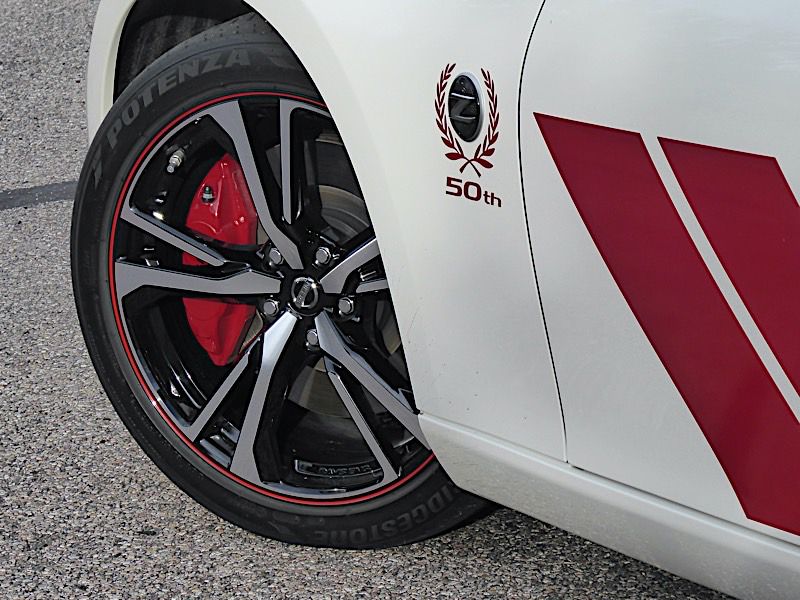
Photo by Ron Sessions
Z Dynamics
Despite its age, the 370Z offers vehicle dynamics comparing favorably to some more recently minted competitors. With aluminum-intensive double-wishbone front and multi-link rear suspensions, the 370Z doesn’t feel Miata-light on its feet, but it does pretty much anything asked of it.
The two-seater’s ride quality is everyday good — firm but not harsh. Its organic, hydraulically boosted, speed-sensitive variable-assist rack and pinion steering is a driver’s delight. Effort is lighter at lower speeds for easy around-town and firms up for stability at highway speeds. A quick 13.5:1 ratio and a tight turning circle are plusses. A three-point triangulated front strut-tower brace aids body rigidity. With the open cargo area, road noise can get slightly intrusive on asphalt roads with high aggregate content or over brushed concrete, but offsetting that somewhat is the melodic purr from the twin large-bore exhaust outlets. The 370Z is, after all, a sports car. The NISMO iteration gets higher spring rates, stiffer dampers, a shorter final drive, and the aforementioned larger-diameter and thicker brake rotors, as well as meatier rubber.
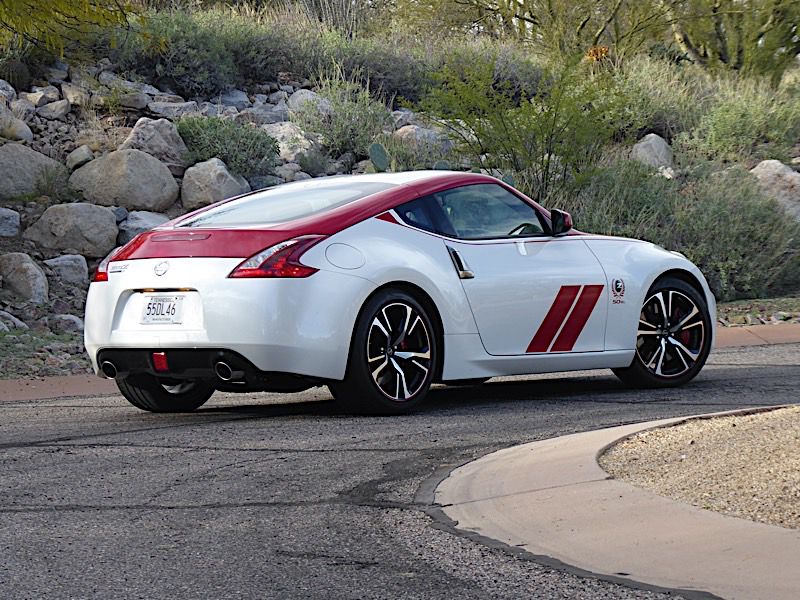
Photo by Ron Sessions
Affordable Legend
While the 2020 370Z may not offer the latest in safety or infotainment tech, its sports car cred is genuine. It may just boil down to whether you’re more interested in clipping that apex on a twisty road and executing a satisfying gear shift or perhaps keeping your Facebook page updated.
The original 1970 Datsun 240Z was the first globally successful Japanese-brand sports car, offering a just-right blend of sporty design, fun-to-drive handling, ample power, and above all, affordability. In the interim, ashtrays were replaced by cup holders, but the same winning combination of attributes holds true today. The surprisingly affordable 2020 Nissan 370Z does all of those things wrapped in a shape that can still catch your eye a decade after it first hit the streets.
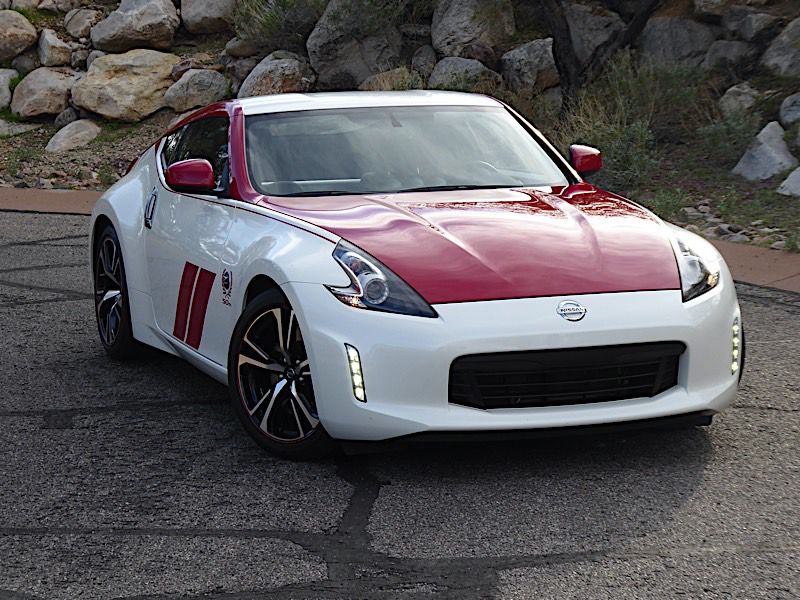
Photo by Ron Sessions